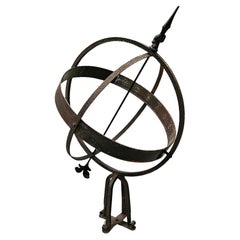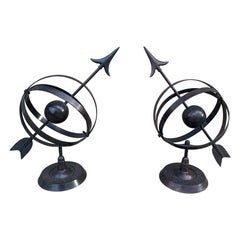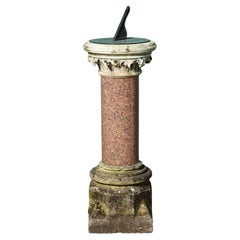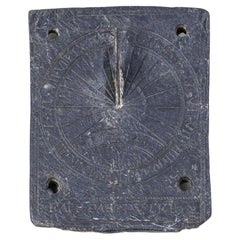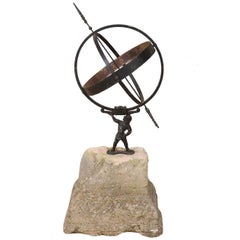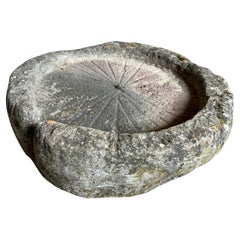Sundials
1950s Swedish Vintage Sundials
Brass
Late 20th Century American Neoclassical Sundials
Iron
Late 19th Century English Victorian Antique Sundials
Stone, Limestone, Granite, Metal, Bronze
Late 18th Century French Antique Sundials
Slate
Mid-20th Century Swedish Sundials
Stone, Copper, Metal
16th Century French Antique Sundials
Stone
Mid-19th Century English Gothic Antique Sundials
Stone, Composition, Metal, Steel
20th Century American Mid-Century Modern Sundials
Iron
Late 19th Century English Medieval Antique Sundials
Bronze
Early 20th Century English Georgian Sundials
Stone, Limestone, Metal, Steel
Early 19th Century English Georgian Antique Sundials
Marble, Siena Marble
1910s American Aesthetic Movement Vintage Sundials
Bronze
Early 20th Century English Georgian Sundials
Stone, Metal, Bronze, Lead
Early 20th Century English Victorian Sundials
Metal, Bronze
20th Century English Victorian Sundials
Stone, Metal
1840s British William IV Antique Sundials
Late 19th Century English Georgian Antique Sundials
Marble, Carrara Marble
Mid-20th Century English Mid-Century Modern Sundials
Metal, Bronze
Late 19th Century Antique Sundials
Steel, Iron
Mid-19th Century English Georgian Antique Sundials
Metal, Bronze
1910s Swedish Primitive Vintage Sundials
Concrete, Metal
Late 19th Century English Victorian Antique Sundials
Stone, Marble, Iron
Mid-20th Century English Mid-Century Modern Sundials
Stone, Granite, Metal, Copper
Antique and Vintage Sundials
Although typically decorative, antique and vintage sundials transport a guest in your home to a different era, their simple function a tether to the ancient world.
Humans have tracked time since the dawn of civilization. Before the invention of precise mechanical clocks, various materials including water and incense were used to mark the passage of time. The sundial was one of the earliest of these timekeeping devices.
The oldest known sundial dates back to 1,500 B.C. in Egypt. The very first sundials were simple stone blocks with markings and a vertical needle of wood or metal to indicate the hours with its shadow. Later Greek sundials had a gnomon parallel to the axis of the Earth. Some flat sundials from the Islamic world were directional objects for pointing the way to Mecca.
Mechanical clocks use a series of gears and springs to track time precisely; sundials rely on light and shadow. As sunlight crosses over a sundial, it casts a shadow that moves across the face of the dial as the Earth rotates.
There are now more accurate, easier and probably cooler ways to tell time, yet the sundial persists. It is not uncommon to find flat stone sundials among an assemblage of decorative elements in colorful gardens and standing sundials in expertly appointed outdoor spaces.
While garden sundials are among the most popular sundials today, sundials made of metal, stone, bronze and more can be found on 1stDibs to match any taste or setting. The collection also includes sundials of Scandinavian, British and North American origins.
